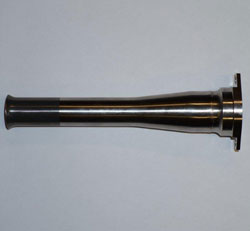Closed-loop water cooling kits are often used in computers or gaming PCs but do not have the greatest of reputations when it comes to safety, though they may be convenient. Instead, enthusiast are using custom kits due to their performance and the fact that they can customize them to be just as they need them to be. The new Thermaltake Pacific R360 D5 water cooling kit seems to be a great hit so far this year, because it has everything enthusiast builders need, and everything is all in one box!
DIY Water Cooling Kit in a Box
Inside this Pandora’s box of goodies (for some of us) you will find:
- A CPU water block – has a copper base an anti-corrosive nickel plating. Block is claimed to fit all modern CPU sockets
- A D5 pump and reservoir
- A 360mm slim radiator
- Six Compression fittings
- Three Ring 12 LED blue radiator fans – hydraulic bearing and anti-vibration mounting system. This also aids the aesthetics as well as make the cooler quiet.
- A length of tubing
- Thermaltake 1000 Blue Coolant
- Extra accessories – often ordered extras to improve the external appearance of the water cooling kit.
What does Nickel Plating do?
The CPU water block has a base made out of copper and anti-corrosive nickel plating. What does nickel plating do to help? Due to it being so corrosion resistant, its life is drastically extended, which means that part replacement occurs much less frequently than with other coating types, materials or if left uncoated. Rust is unable to form where nickel plating has occurred and therefore the quality of the components is improved. Nickel plating is great because it deposits itself evenly over a surface which not only looks nicer aesthetically, but it also makes the component a lot more durable and hard wearing. Nickel plating is the perfect solution for components which a subjected to a high amount of friction, wear or use and if it is treated properly, with the appropriate heat treatment, it will not chip or flake either like a top coat of paint or lacquer does.
Contact us Today
If you or your business are interested in plating, such as electroless nickel plating or diffused nickel plating, heat treatment or have a special project which requires specialist assistance, then why not contact us? We are Derbyshire based, leading specialists in the plating industry who offer a wide range of well-developed, tried and tested techniques which are not only high-end but also cost effective. We have experience of working for the computing, aerospace, medical, army and automotive industries, to name but a few and offer our services to the UK, Germany, France, Brazil and Holland.

